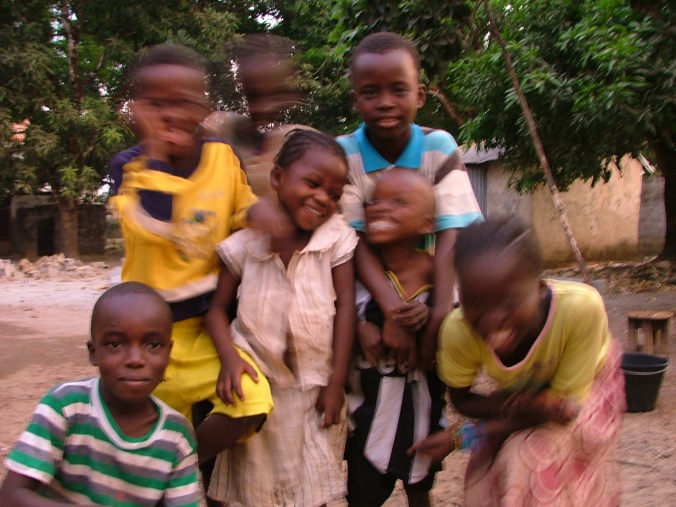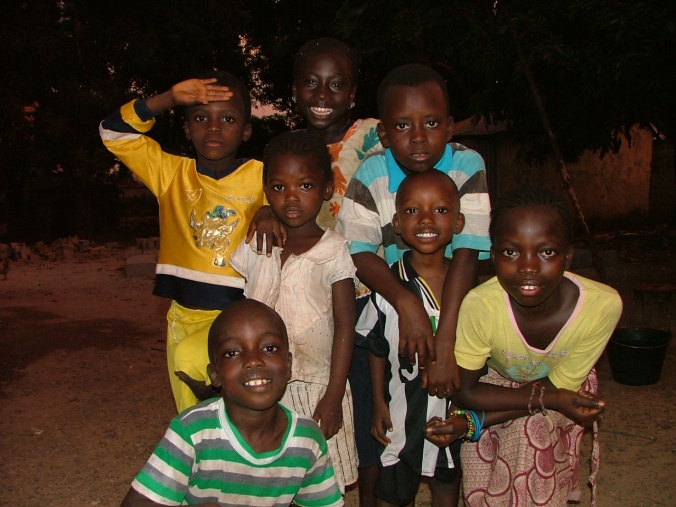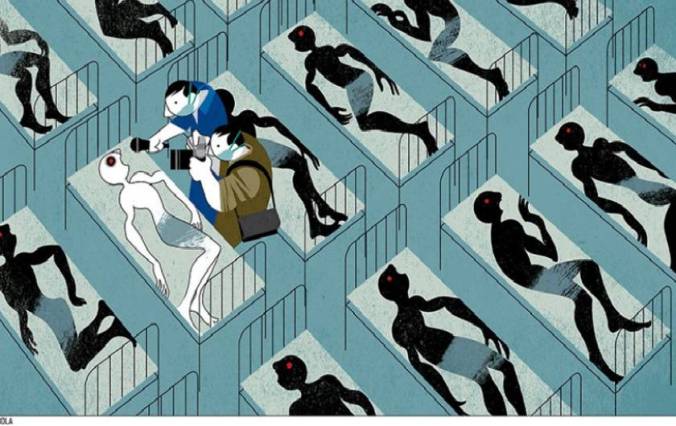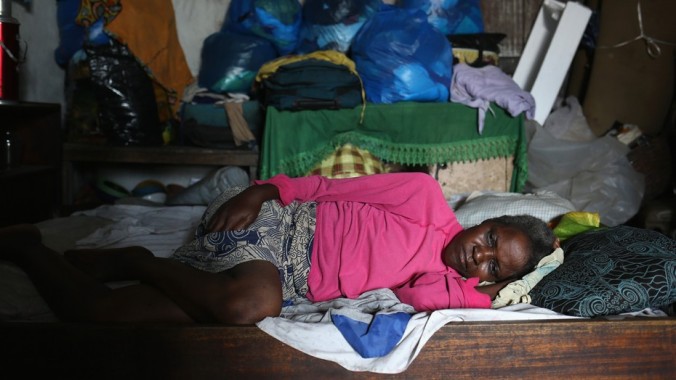I remember quite clearly how these two photos came to be. I had pulled my camera out, which always led to a flurry of excitement. Every child screaming at me to have their picture taken — a sort of reverse paparazzi. If I wanted to take a picture of something or someone, I had to prepare for a 30 minute riot with the whole family demanding another pose.
So, I had wanted a photograph of one thing or another and my camera was out. The kids were circling. These photos were taken at the beginning of my training so my French was limited and my Susu non-existant. I managed to explain to them through a combination of movement, basic words, and guttural noises to group together and smile and stay still long enough for me to get a good photograph. Immediately after hearing the shutter click they would run towards me and demand to see it.


I saw the first photograph on my camera screen — dissatisfaction. I changed a setting, turned the flash on, hounded the kids back together and made them pose for another one. I glanced at the screen again — satisfied. I had finally gotten them to hold still which, to be honest, was quite a monumental task.
We passed the camera around, everyone happy to see their face on the tiny LCD screen. They demanded more photographs, I obliged, and eventually the camera was put to bed for the evening. We went on with our night and our lives. I completed training, I moved out of this family’s house and into my village, I lived there for six months, I was evacuated, and now I have been home for almost 3 full months.
Now when I look at these two photographs they are incomparable. The first photograph, the one that seemed flawed at the time, the one I almost deleted immediately but by some chance left on my memory card, this photograph is the one that now calls to me. Don’t get me wrong — the children look beautiful in the second photograph. It brings a smile to my face to see their happiness and recall the time we spent together. But the first photograph?
It shows the motion and joy of their lives. The constant movement, laughter, and play. It shows the glee budding on Alia’s tiny face. It shows Fati mid-giggle. I feel Bountu’s amusement in this photograph. I sense my playmates running around me, pulling on my hair, begging for me to pick them up and spin them around in the air. There is feeling and life in this photograph.
It takes me right back.
 Meet “Team Zim”: Obert and Simba are two IRC Sierra Leone short-term staff members from Zimbabwe. Both have been working in the Bo and Port Loko Isolation Units run by IRC. Obert is an Environmental Health Specialist and Simba is an Isolation Unit Nurse Supervisor. Both of their jobs require them to enter the low risk and high risk zones of the isolation units, for direct patient care or for managing the chlorine systems and WASH facilities. They also provide supervision to the local nurses and environmental health officers and sprayers. Obert is leaving to go back home to finish his post-graduate degree while Simba is taking a week of rest before returning for six more weeks of work inside the isolation units.
Meet “Team Zim”: Obert and Simba are two IRC Sierra Leone short-term staff members from Zimbabwe. Both have been working in the Bo and Port Loko Isolation Units run by IRC. Obert is an Environmental Health Specialist and Simba is an Isolation Unit Nurse Supervisor. Both of their jobs require them to enter the low risk and high risk zones of the isolation units, for direct patient care or for managing the chlorine systems and WASH facilities. They also provide supervision to the local nurses and environmental health officers and sprayers. Obert is leaving to go back home to finish his post-graduate degree while Simba is taking a week of rest before returning for six more weeks of work inside the isolation units.





